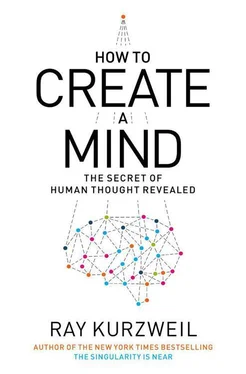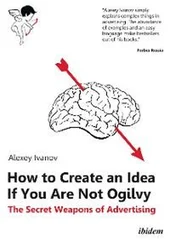Millions of people witnessed the IBM computer named Watson play the natural-language game of Jeopardy! and obtain a higher score than the best two human players in the world combined. It should be noted that not only did Watson read and “understand” the subtle language in the Jeopardy! query (which includes such phenomena as puns and metaphors), but it obtained the knowledge it needed to come up with a response from understanding hundreds of millions of pages of natural-language documents including Wikipedia and other encyclopedias on its own. It needed to master virtually every area of human intellectual endeavor, including history, science, literature, the arts, culture, and more. IBM is now working with Nuance Speech Technologies (formerly Kurzweil Computer Products, my first company) on a new version of Watson that will read medical literature (essentially all medical journals and leading medical blogs) to become a master diagnostician and medical consultant, using Nuance’s clinical language–understanding technologies. Some observers have argued that Watson does not really “understand” the Jeopardy! queries or the encyclopedias it has read because it is just engaging in “statistical analysis.” A key point I will describe here is that the mathematical techniques that have evolved in the field of artificial intelligence (such as those used in Watson and Siri, the iPhone assistant) are mathematically very similar to the methods that biology evolved in the form of the neocortex. If understanding language and other phenomena through statistical analysis does not count as true understanding, then humans have no understanding either.
Watson’s ability to intelligently master the knowledge in natural-language documents is coming to a search engine near you, and soon. People are already talking to their phones in natural language (via Siri, for example, which was also contributed to by Nuance). These natural-language assistants will rapidly become more intelligent as they utilize more of the Watson-like methods and as Watson itself continues to improve.
The Google self-driving cars have logged 200,000 miles in the busy cities and towns of California (a figure that will undoubtedly be much higher by the time this book hits the real and virtual shelves). There are many other examples of artificial intelligence in today’s world, and a great deal more on the horizon.
As further examples of the LOAR, the spatial resolution of brain scanning and the amount of data we are gathering on the brain are doubling every year. We are also demonstrating that we can turn this data into working models and simulations of brain regions. We have succeeded in reverse-engineering key functions of the auditory cortex, where we process information about sound; the visual cortex, where we process information from our sight; and the cerebellum, where we do a portion of our skill formation (such as catching a fly ball).
The cutting edge of the project to understand, model, and simulate the human brain is to reverse-engineer the cerebral neocortex, where we do our recursive hierarchical thinking. The cerebral cortex, which accounts for 80 percent of the human brain, is composed of a highly repetitive structure, allowing humans to create arbitrarily complex structures of ideas.
In the pattern recognition theory of mind, I describe a model of how the human brain achieves this critical capability using a very clever structure designed by biological evolution. There are details in this cortical mechanism that we do not yet fully understand, but we know enough about the functions it needs to perform that we can nonetheless design algorithms that accomplish the same purpose. By beginning to understand the neocortex, we are now in a position to greatly amplify its powers, just as the world of aviation has vastly amplified the powers of Bernoulli’s principle. The operating principle of the neocortex is arguably the most important idea in the world, as it is capable of representing all knowledge and skills as well as creating new knowledge. It is the neocortex, after all, that has been responsible for every novel, every song, every painting, every scientific discovery, and the multifarious other products of human thought.
There is a great need in the field of neuroscience for a theory that ties together the extremely disparate and extensive observations that are being reported on a daily basis. A unified theory is a crucial requirement in every major area of science. In chapter 1 I’ll describe how two daydreamers unified biology and physics, fields that had previously seemed hopelessly disordered and varied, and then address how such a theory can be applied to the landscape of the brain.
Today we often encounter great celebrations of the complexity of the human brain. Google returns some 30 million links for a search request for quotations on that topic. (It is impossible to translate this into the number of actual quotations it is returning, however, as some of the Web sites linked have multiple quotes, and some have none.) James D. Watson himself wrote in 1992 that “the brain is the last and grandest biological frontier, the most complex thing we have yet discovered in our universe.” He goes on to explain why he believes that “it contains hundreds of billions of cells interlinked through trillions of connections. The brain boggles the mind.” 5
I agree with Watson’s sentiment about the brain’s being the grandest biological frontier, but the fact that it contains many billions of cells and trillions of connections does not necessarily make its primary method complex if we can identify readily understandable (and recreatable) patterns in those cells and connections, especially massively redundant ones.
Let’s think about what it means to be complex. We might ask, is a forest complex? The answer depends on the perspective you choose to take. You could note that there are many thousands of trees in the forest and that each one is different. You could then go on to note that each tree has thousands of branches and that each branch is completely different. Then you could proceed to describe the convoluted vagaries of a single branch. Your conclusion might be that the forest has a complexity beyond our wildest imagination.
But such an approach would literally be a failure to see the forest for the trees. Certainly there is a great deal of fractal variation among trees and branches, but to correctly understand the principles of a forest you would do better to start by identifying the distinct patterns of redundancy with stochastic (that is, random) variation that are found there. It would be fair to say that the concept of a forest is simpler than the concept of a tree.
Thus it is with the brain, which has a similar enormous redundancy, especially in the neocortex. As I will describe in this book, it would be fair to say that there is more complexity in a single neuron than in the overall structure of the neocortex.
My goal in this book is definitely not to add another quotation to the millions that already exist attesting to how complex the brain is, but rather to impress you with the power of its simplicity. I will do so by describing how a basic ingenious mechanism for recognizing, remembering, and predicting a pattern, repeated in the neocortex hundreds of millions of times, accounts for the great diversity of our thinking. Just as an astonishing diversity of organisms arises from the different combinations of the values of the genetic code found in nuclear and mitochondrial DNA, so too does an astounding array of ideas, thoughts, and skills form based on the values of the patterns (of connections and synaptic strengths) found in and between our neocortical pattern recognizers. As MIT neuroscientist Sebastian Seung says, “Identity lies not in our genes, but in the connections between our brain cells.” 6
Читать дальше












